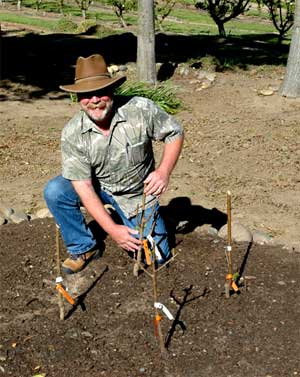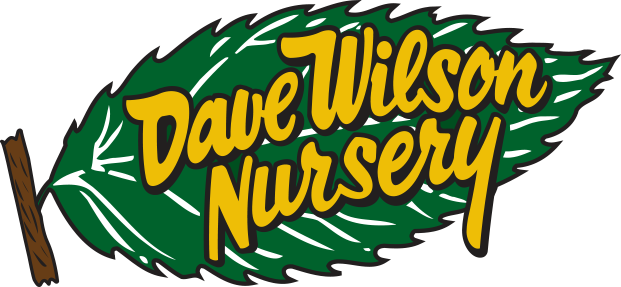We sell our products to retail nurseries, garden centers, container growers who sell to landscape contractors and retail nurseries, mail order nurseries, and anyone else who qualifies. We do not accept direct sales to consumers.
Fruit Trees to Plant Together

Embarking on a Backyard Orchard Culture adventure - planting an assortment of fruit trees at close spacing and controlling their size by summer pruning - means deciding which varieties to plant together, whether 4, 3 or 2 trees in each hole and/or in a hedgerow.
The first rule is to plant similar rootstocks and similar care requirements together. For example, plant trees on Citation together, apples on M-111 together, cherries on Colt together. Plant together peaches and nectarines, plums and Pluots, and even peaches, nectarines, plums and apricots.
In The Art of Successive Ripening, Tom Spellman discusses his favorite compatible varieties to multi-plant for an extended harvest of fresh fruit.
Here are some general multi-planting suggestions:
Apricots or Pluot Interspecifics®
Four in one hole will enhance cross-pollination, increasing the odds you will have fruit every year.
Or, plant two of each like this:
Early apricot
Early Pluot®
Later-ripening apricot
Later-ripening Pluot®
All in the space of one tree - WOW!
Cherries
Cherries ripen close together (in time), but a 4-in-one-hole planting still has the advantages of multiple cross-pollination matches, early and late ripening, red and yellow varieties:
Early black variety
Early mid-season yellow variety
Early late-season yellow variety
Late season black variety
In half the space your neighbor would use for two separate trees, you would have twice the variety.
Peaches and Nectarines
So many possibilities here – white, yellow, subacid, early – mid – late.
Early season yellow peach
Early mid-season white nectarine
Late mid-season white peach
Late season yellow nectarine
Or perhaps a tighter harvest schedule, one right after the other – so many wonderful combinations to consider.
Plums
Such a wonderful assortment within a single fruit type – sweet, tart, red, green, yellow, purple, black, mottled, myriad appealing flavors. For reasons of cross-pollination and successions of delicious fruit, plums are among the best candidates for close-planting.
Early red plum
Mid-season black plum
Late mid-season purple plum
Late greenish-yellow plum
All taste-test winners - WOW!
Plums may also be combined with apricots and Pluot® varieties. For many home growers, a hedgerow or a couple of 4-in-one-hole plantings of plum and Pluot® is a must.
Apples
An apple multi-planting offers the same advantage as the stone fruits – four or more varieties in the space of one, but later in the growing season – summer to fall.
Red, yellow and green apples, tart or sweet, dense or juicy…
Four in the same hole
Because variety is the spice of life
And because for many years from one planting you will Harvest Better Health!
Don’t Forget the Fruit Salad!
Nothing about fruit tasting is more surprising or wonderful than how fruit varieties enhance one another when eaten together – flavors, sweetness, tartness and textures all bouncing off each other. The ultimate fruit-tasting experience might be a summer-time bowl of tree-ripe, sliced white and yellow peaches and nectarines (some juicy, some firm, including at least one subacid-sweet), tart-sweet plums, sweet Pluots and Asian pear. Oh my goodness!
3 or 4 peaches and nectarines in one hole (some yellow, some white)
plus 3 or 4 plum and Pluot® varieties in one hole
plus one or two espaliered Asian pears
all ripening at once
Plant these trees and in a couple of years you can begin a new family tradition - a late-summer fruit party.
